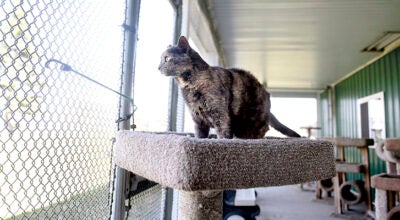High temps, dry weather hampering Nature Center
Published 10:04 pm Thursday, August 9, 2012
Editor’s note: This story originally appeared in the Aug. 5 print edition of the Herald. For the complete series, click here.
The Jay C. Hormel Nature Center is feeling the effects of the recent drought.
Executive Director Larry Dolphin said some of the trees in the center’s woods are beginning to yellow and show signs of stress, but there’s little to be done overall.
“We can’t begin to water all the trees here in the woods,” Dolphin said, who noted this has been one of the driest stretches he’s seen since 1988 — the year he started there.
However, Dolphin and other Nature Center workers have been watering the younger trees planted closes to the buildings and main entrance. They’ve also been watering maple trees and the trees planted after the 2009 tornado, especially the maples used by area children for syrup tapping.
The center’s grasslands, however, are weathering the drought just fine.
“The prairie is built to withstand drought,” Dolphin said.
West of the Mississippi River, there’s traditionally less moisture than to the east, Dolphin said, which means there’s always lots of shifting between grasslands and woodlands.
“We’re in a battle zone for prairie versus forest,” Dolphin said.
Prairie grasses have a fairly deep root system, so Dolphin said they are less susceptible to drought. However, native grasses may be shorter than other years.
Certain trees, however, don’t have expansive root systems capable of absorbing enough water in prolonged dry conditions.
Dolphin said he has seen signs of the climate shifting gradually since he’s started at the Nature Center, particularly with winters being shorter.
A prime example is maple syrup tapping, which is typically done in spring when temperatures are below freezing at night and above freezing during the day. Traditionally, native Americans tapped trees in April. This year, Dolphin said, they almost could have tapped the trees in February, but instead, had little time to tap the trees.
“That was way off,” he said, noting that it’s typically done in the mid- to end of March.




